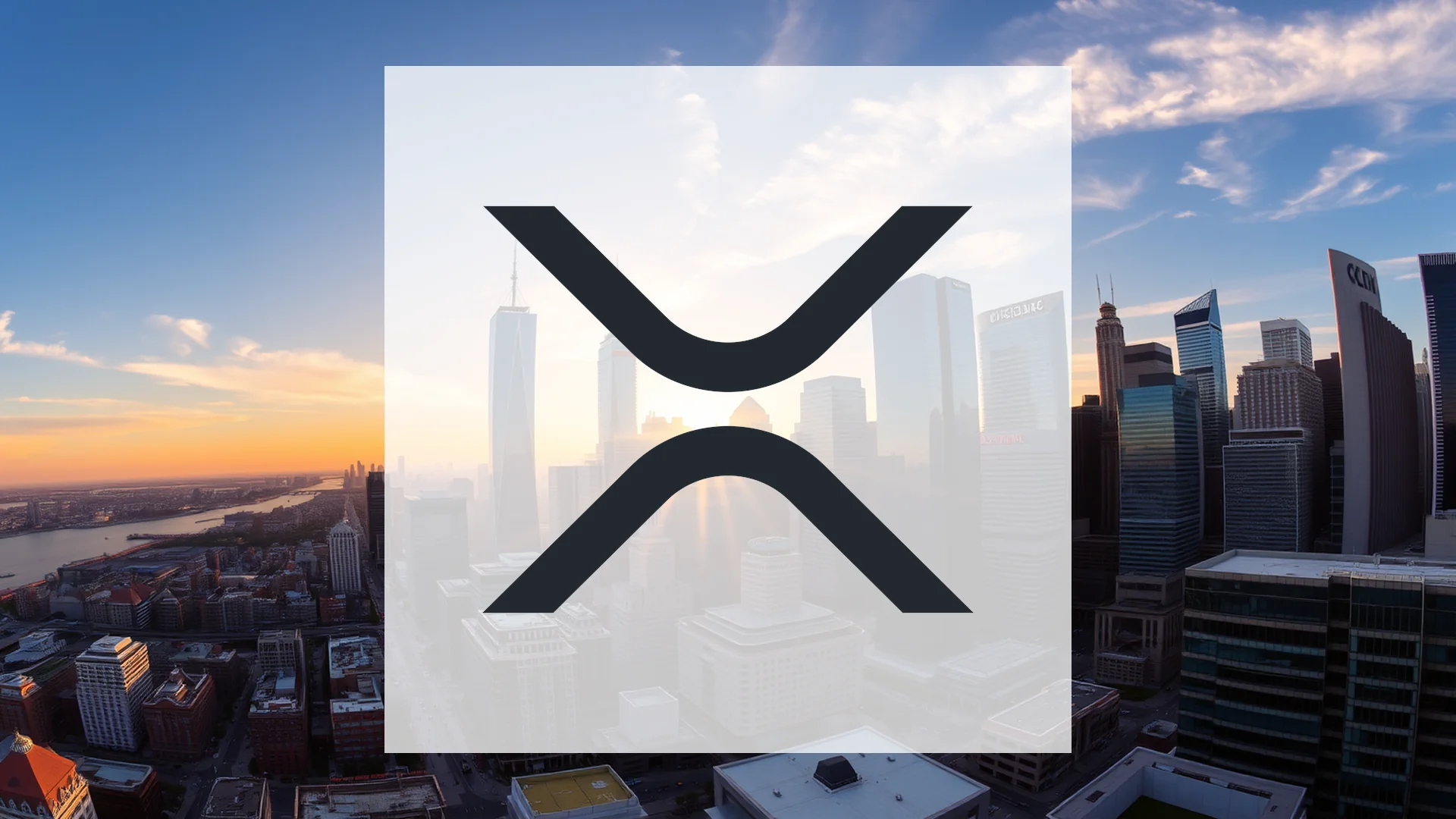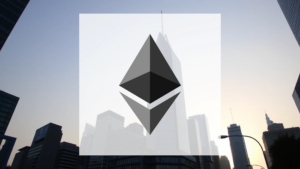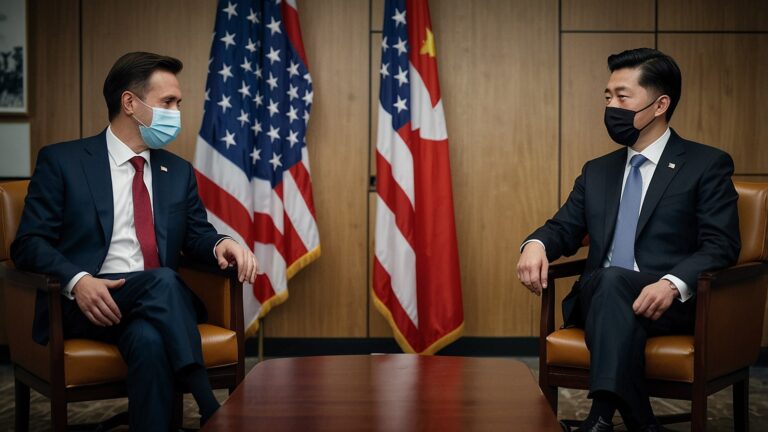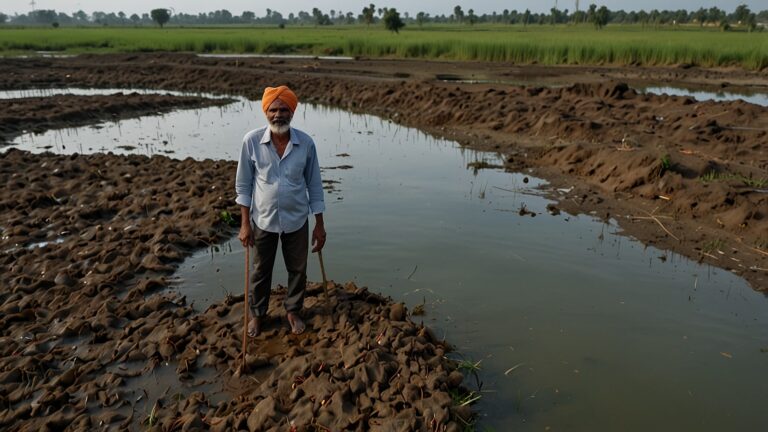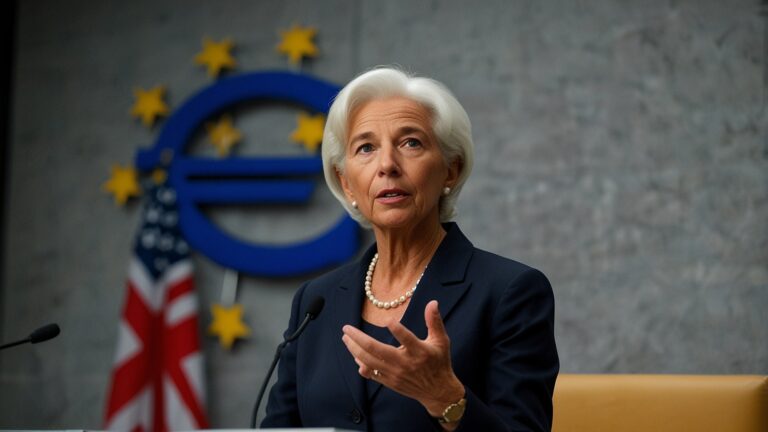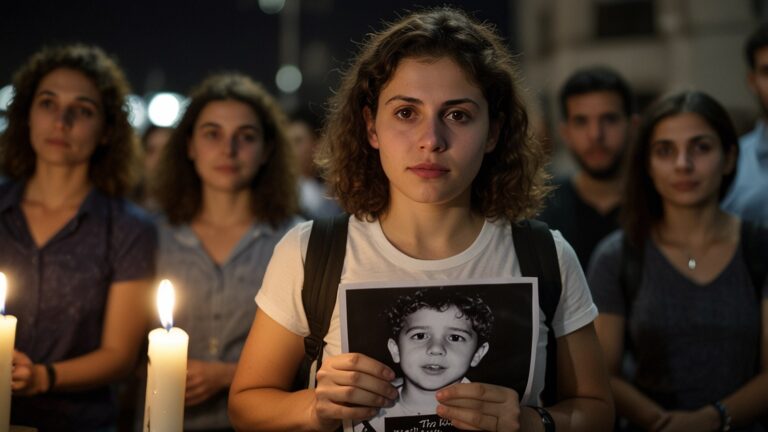TikTok Faces Midnight Deadline as US-China Trade Talks Stall in Madrid, Sparking Global Tech Panic
Madrid, September 20, 2025 – The destiny of TikTok is hanging in a very thin thread, as the U.S.-China trade talks in Madrid enter an uneasy stalemate. Two days of closed-door haggling saw the negotiating delegations of the U.S.
Treasury Secretary Scott Bessent and Chinese Vice Premier He Lifeng walk out without a solution, whereupon the 170 million American users of the app and the $200 billion empire of ByteDance were threatened with forced divestiture.
The threat of the standoff, caused by growing tariffs and national security concerns, will cut to the very bone one of the most lucrative industries in the world, causing a wave of shocks in global tech shares and content producers in Sydney and Sao Paulo.
The drama came to a head this afternoon, with Bessent and, next to him, U.S. Trade Representative Jamieson Greer, sounding a very stern threat: ByteDance has until 11.59 p.m. ET to sell its U.S. operations, or it will be banned immediately.
Bessent had said, as a crowd of journalists crowded outside the Palacio de Congresos, America would not give up its data sovereignty, as it was the final word of the Trump administration policy when it came to Chinese tech intrusion.
On the other side of the table, He Lifeng retaliated by charging Beijing with economic bullying, promising to impose Beijing retaliation by curbing the exports of rare earths that are important to U.S. semiconductors.
This is an eleventh-hour crisis based on a 2020 executive order rekindled after increased U.S.-China tensions. Backed by a Beijing-based parent, ByteDance, TikTok has rushed to sell its American division and has received bids not only from Oracle but also from Microsoft and even a Hollywood industry consortium.
However, regulatory wrangles and Beijing’s unwillingness to consent to the transfer of algorithms have stalled the deals. There is grumbling among insiders that there is a final offer, a kind of golden share in a restructured organisation, with some oversight, some operating freedom.
Nonetheless, lacking a consensus, TikTok might be removed from the app stores by the first day of the month, putting the earnings of influencers and the marketing efforts of advertisers out of business within a day.
Fractured Talks: Tariffs, Tech, and Tit-for-Tat
The sun-lit halls of Madrid, where the flamenco festivals were normally held, were a strange venue for superpower sparring. The fourth meeting in four months in the European capitals was intended to prevent a repeat of the trade war on a bigger scale.
To be discussed: the extension of the deadline of TikTok, the increase of the tariffs on steel up to 25%, and the intellectual property debate of the AI training data. However, there was more acrimony as the Chinese negotiators condemned the U.S. extraterritoriality, and Americans pounded on the U.S. alleged data pipelines to the People’s Liberation Army.
The divide is evident, according to a leaked briefing note sent to EU observers, in which Washington wants all divestiture and no Chinese board seats, and Beijing wants to retain algorithmic IP, which it considers a digital crown jewel.
There were gains on the margins, such as ramps down on soybean import quotas and collective EV battery criteria, but TikTok was the battlefield. Trade analyst (and IE Business School professor) Dr Elena Vasquez was sitting in a nearby cafe, observing that it was not an app but who held the future of information.
The world markets, feeling unsafe, convulsed. The Hong Kong Hang Seng nosedived by 4.8% at the end of the day, and proxies of ByteDance, such as Tencent, nosedived by 12%. FTSE-listed tech companies in London fell 2 per cent, and the Tokyo Nikkei recovered expectations of supply chain relocations to Japan.
The content ecosystem is on the edge: Australian influencers who spend over $1.2 billion on TikTok ads to promote their beachwear companies are preparing to migrate to YouTube; the Brazilian dance creators who have 50 million followers are afraid that they will lose the virality algorithms adapted to samba rhythms.
EU, as a neutral host, is a spectator of war. The Digital Markets Act of Brussels may expedite the investigation into TikTok clones; however, Commissioner Margrethe Vestager, who oversees Europe with 150 million users, called for multilateral forbearance in a tweet. A U.S. ban will just break the internet, as she cautioned, bringing back the Cold War silos of technology.
Maker Anarchy: Algorithms to a Living
Even outside the boardrooms, there is the human cost. The influencer enclaves of Los Angeles, although the epicentre of the quake is the world, influencers such as Sydney-based vlogger Mia Chen, who has 8 million followers, have shifted to Instagram Reels, but decries the spirit of the For You Page of TikTok.
Not likes, it has to be discovery, Chen tells herself, scrolling through her phone during a Madrid layover. Her own-label products, such as the Aussie skincare and the Korean snacks, have a 40 per cent revenue drop in case the app goes away.
With content farms in Mumbai, full of 20-somethings earning money by churning viral challenges at $50 a pop, panic is the order of the day. TikTok fed our families; now we write content at Meta, says Raj Patel, who is a scriptwriter at a 500-follower dance troupe.
It’s 200 million users in India, who have eluded a ban in the past through judicial stays, now sell their talent southwards, instructing their Southeast Asian counterparts in the art of the Duet. Local applications such as news feeds on Opera Mini become the new standard of African creators in Lagos, but the monetisation is slow, increasing the digital divide.
Advertisers, too, scramble. Unilever and Procter & Gamble are some of the biggest spenders on TikTok, and they have already set aside 300 million dollars to use in emergencies on Snapchat.
A Nielsen report, published today in a hurry, forecasts an increase of 15 per cent in short-form video consumption elsewhere, although with engagement fatigue, with users expressing sorrow over the scroll.
Geopolitics Gambit: Beijing to Brasilia
The reaction of Beijing is brought about with subtle fury. The state media, such as Global Times, described the deadline as digital imperialism, setting the stage in the minds of the people to counteractions.
There are rumours of a WeChat crackdown on American companies that could leave 100 million American expatriates and tourists stuck. In another tit-or-tat move, the Chinese Commerce Ministry threatened to investigate Apple’s dominance in its App Store, threatening to delist it.
Latin America, the region of growth of TikTok, is straining. Mexico City, where quake drills briefly halted live near video feeds, small enterprises based on viral taco tutorials look to lose as much as half a billion dollars a year.
Calling sovereign data pacts, Brazilian President Lula da Silva, in an address to Brasilia, suggested a Mercosur TikTok reflector as a way of protecting regional algorithms. The splash of Asia-Pacific tremors.
KakaoTalk of South Korea looks at the scraps of acquisitions, Singapore fintechs bet against ad droughts. The SoftBank of Japan, a supporter of ByteDance, sent representatives to Madrid, offering a bridge loan to buyout, valued at 50 billion dollars, under the condition of a tariff ceasefire.
Angles on the environment come out strangely: TikTok eco-challenges, including #TrashTag and #ClimateAction, have rallied 1 billion views around sustainability. A restriction may kill these grassroots impulses, according to a WWF brief, calling on any deal to protect activist feeds to contain green clauses.
Innovation Imperilled: The Greater Tech Seismic
The crisis highlights the collateral damage of innovation. The algorithms developed by ByteDance, based on petabytes of user data, drive nascent AI, such as the recommendation engines of Douyin, a reflection of global R&D. Forced division is a threat to brain drain, as engineers will migrate to cloud solutions offered by Huawei.
Ventures that are reminiscent of TikTok do not receive funding from VCs in the Berlin startup ecosystem due to regulatory roulette. Academia frets too. The Internet Institute at Oxford projects a splinternet, in which the webs that the U.S.-China will divide into suffocate transnational research.
As Prof. Gina Chen, a researcher of viral psychology, says, Chinese people can play all day on TikTok, which is not only fun but also a human attention test. Yet, silver linings glint. Competitors, such as Triller and Byte, speed up features–AR filters, live e-commerce, that are destined to receive an influx of users. Naver Clova, which is available in Seoul, incorporates short-video training, which can potentially outdo lagging in the U.S.
Midnight Reckoning: Ways to Dawn or Darkness
The lights of Madrid are going out: the world is waiting. It is most probable that an extension would be made of 90 days, according to anonymous sources, but at what price? Bessent was foaming at the mouth with the suggestion of phased compliance, where TikTok would give in to Chinese demands on fentanyl precursors. He was stoic and vowed principled persistence.
To users, there are numerous contingency plans: Download archives, cross-post marathons. But none of the intangibles, serendipitous scrolls, or midnight memes can be backed up. A Tokyo teenager posted in one of the viral pre-deadline posts: “In case TikTok goes dead, inter me alive with my phone.
This is a digital Rubicon, which is September 20, 2025, in Madrid. The thread that TikTok is crafted of, global and crisis-goes-round, puts the tensile strength of trade to the test. Will the superpowers undress or unstrangle the cord? There is one fact that lives in the shadow of the algorithm: In a globalised world, alienation cuts to the core.
Indian Shrimp Farmers Reel from Global Tariff Storm, Threatening Coastal Livelihoods and Export Boom
In Visakhapatnam, a small town on the Andhra coast, where the Arabian Sea is inexhaustibly washing empty ranks of salt pits filled with shrimp, an insidious economic tragedy is being enacted.
In a move to safeguard the domestic aquaculture, U.S. import tariffs have cut Indian shrimp exports by a quarter over the last year, turning what has been a rags-to-riches success story into a desperation and diversification story.
Farmers such as Rajesh Kumar, who had put their life savings in aerators and feed mills, are staring at blank nets and soaring debts as the world trade tensions start rocking the world through one of the most dynamic industries in India.
The increased tariffs to 15 per cent on imports into the country on frozen shrimp last October were supposed to protect American producers against what Washington considers unhealthy subsidies in Asian agriculture. The blow has been devastating in India, the second biggest exporter of shrimp in the world after Ecuador.
Shipments to the U.S. valued at more than 1 billion dollars every year have dropped, and mills have been closed down, with workers finding odd work in the construction industry. We served American tables; we starve now, Kumar cries, wiping his sweaty brow, when he looks into his 10-acre pond, where young prawns swim listlessly in tainted waters.
This epic underscores the vulnerability of the so-called blue revolution, a boom which post-2014 has raised millions of people out of poverty by cultivating vannamei shrimps. Production was encouraged through government incentives such as low-interest loan facilities, disease-resistant strains, and so on, to 800,000 tons per year.
However, the golden goose was the U.S. market, which was taking 40% of the exports. As tariffs sink in, prices have plunged 30% and margins are already getting squeezed by soaring feed prices and salinity outbursts due to climate.
Trade Tensions: A Seafood Brawl in the International Arena
The American tariffs are also the result of a larger wave of protectionism, replicating the steel and solar panels controversy. The American shrimpers who are concentrated in the Gulf Coast claim that Indian state-supported hatcheries undermine healthy competition.
Claiming that they are flooding our markets with low-cost, antibiotic-laced products, Gulf Shrimp Alliance coordinator Lisa Jackson cites FDA rejections due to residue violations of Indian shipments. To counter this, New Delhi has filed complaints to the World Trade Organisation, accusing the moves of being discriminatory.
But the pain is acutely local. In Bhimavaram, the Shrimp capital of India, processing plants that had been running 24/7 are now running at half capacity. Five hundred thousand or more women in peeling sheds are on the line.
According to the Seafood Exporters Association, there has been an 18 per cent reduction in the number of workers since January, and migrant workers in the country who had gone to work in Bihar are coming home with no hand.
These are not simple figures, as the head of the association, Vivek Reddy, calls them families, and he goes to Delhi lobbies and village panchayats and begs to be spared. Diversification is calling, but the challenges are multiple. Other markets, such as China and the EU, require more rigid sustainability certification, which the smallholders cannot afford.
The 15 per cent in volume that has been redistributed to Vietnam has been captured by its agile competitor at a cheaper logistics expense. At the same time, the domestic consumption is lower; Indians like freshwater fish, considering shrimp an elite import. The pilot tests to reposition it as an affordable protein fail due to cultural taboos.
Environmental strains compound the miseries. The excessive use of groundwater in ponds has resulted in the salination of farmlands, leading to protests among the rice farmers. According to a 2024 study by the Central Institute of Brackishwater Aquaculture, there are ecological tipping points, and the solution to this is integrated farming with mangroves to perform natural filtration.
In the Gujarat Kutch region, new products are developed whereby income generation is added by combining shrimp and solar desalination. However, to scale up such hybrids requires capital, which farmers who have been hit by tariffs do not have.
Coastal Communities on the Brink: Stories on the Frontline
Tramp the shabby lanes of the fishing hamlets of Kakinada, and the human price clears off. One of the widows, Sunita Devi, a 42-year-old head of a women’s cooperative, remembers the good old times: We used to be able to take our girls to college, get them scooters.
Her 50 peelers are now scraping the half wages, with their side-whiskers sewing masks. Child labour rears its ugly head, school dropouts head out to catch wild. Health clinics record a rise in stress-related conditions, including hypertension and depression, due to swelling debts to informal lenders.
The government has been responding on a piecemeal basis. In March, Prime Minister Narendra Modi’s administration implemented a [?]5,000 crore ($600 million) relief fund on aquaculture of interest subsidies and export insurance.
States with coastlines, such as Odisha and Tamil Nadu, are in a race to establish inland saline farms, not within the shores of a cyclone. But the bureaucracy puts disbursals on its heels; Kumar had to wait six months to get the subsidy, only to discover that the subsidy was insignificant against a [?]2 lakh loan shark bill.
Despair glides through innovation. The technology startups in Hyderabad use AI drones to check the health of the pond, and the disease outbreaks are predicted as a result of the water quality scans. Pilot programs with EU buyers use blockchain traceability applications that guarantee purity of farm-to-fork, with 10 per cent premiums.
Organic shrimp farms in Kerala earn eco-conscious dollars in Japan, combining polyculture with seaweeds to earn carbon credits. According to the entrepreneur Priya Menon, whose app connects 2,000 farmers to high-paying niches, tariffs were a motivator to start thinking outside of the U.S.
This is headed by women who are the backbone of processing. The self-help groups in West Bengal specialise in value-added goods such as the shrimp pickles and dehydrated flakes for the shelves in the Middle East. It is complemented in a UN Women report, which forecasts that empowered cooperatives would recover 20 per cent of revenue lost by 2027 as a result of such a so-called resilience dividend.
Global Ripples: Boardrooms to Bay of Bengal
The Indian shrimp crisis is a ripple effect that affects both the world’s supply chains. The U.S. supermarkets are experiencing an 8 per cent price increase, and chains such as Whole Foods have to obtain their goods in tariff-free Ecuador.
In Southeast Asia, Thailand is pursuing growth, but labour shortages due to migration to urban areas limit its profits. The third-largest purchaser of Indian goods is the EU, which is increasing its restrictions on illegal fishing connections, which indirectly enhances the compliant Indian exporters.
Vulnerabilities are increased by climate change. White spot syndrome virus is an outbreak that is promoted by warmer oceans at the expense of ponds being wiped out overnight. An Indo-U.S. research agreement on genomic tools of resilient strains was ironically signed before the tariffs.
Indian representatives will lobby at COP30 in Brazil next year to introduce blue finance in the climate fund of 100 billion dollars because of the contribution of aquaculture to the food security of 1.4 billion.
The short-term future looks bleak, according to the prediction of economists: the contribution of seafood to the GDP is expected to decrease by 10 per cent by 2026. But the optimists are phoenix potentials.
Should tariffs be softened on WTO arbitration- the hearings will take place in November- exports may recover by 15 per cent. In the meantime, the crisis drives up the self-reliant India (Atmanirbhar Bharat), and the domestic mills consider pet food and nutraceuticals.
Climate Change Policy: Walking the Line to Sustainable Shores
The playbook of Delhi is one that incorporates diplomacy and home fortification. As part of his hot-blooded Geneva speech, Commerce Minister Piyush Goyal called the tariffs neo-colonial and threatened to impose retaliatory duties on U.S. cranberries and almonds.
In the country, the Blue Economy Policy 2.0 aims to realise 10 billion non-U.S. exports by the end of the decade, through the free-trade agreements with the Gulf and ASEAN. Academia makes a call. IIT Madras designs vertical shrimp farms in warehouses in urban areas and reduces land use by a factor of 70.
The NGOs, such as M.S. Swaminathan Research Foundation, seed the systems with biofloc communities to recycle waste to create zero-discharge ponds. It has success stories: A cluster in Tamil Nadu, whose tariffs were EU certified, increased turnover by 12% during the recession.
Migration among youths narrates a different story. With no other conventional avenues available, graduates are turning to marine biotech, where bioactive compounds in shrimp shells are being studied for use in pharmaceuticals. The growing ocean technology park in Visakhapatnam is teeming with startups, attracting funds from Singapore.
Horizons of Hope: Reeling In an Intrepid Future
Just before sunset, the gold of the Bay of Bengal tinges the water, and Rajesh Kumar pours the last bucket of water into his ponds, hoping to see crystal-clear waters in the future. The storm of tariffs has hit the shrimp heartland in India, revealing the overdependence on the far markets and the weak ecosystems.
But out of this froth, grit does emerge: farmers becoming unionised to gain bargaining power, innovators slicing the supply chains, and neighbourhoods building safety nets. It is September 20, 2025, when the world is in flux, which highlights the two-sided nature of trade, connector and cleaver.
In the case of coastal India, the issue of recovery depends on agility: destination diversification, greening operations, and voice amplification. We are taught to swim deeper like Kumar as he gazes at the sea, musing, “The sea gives and takes; we learn to swim deeper.” It is not only survival that is more than mere adaptation, a blueprint of sustainable abundance, so that the blue revolution can be seen not just as lasting, but as generational.
European Central Bank Cuts Rates for Seventh Time Amid Persistent Inflation Woes, Signals Cautious Optimism for Recovery
Frankfurt, September 20, 2025 – The European Central Bank (ECB) has again reduced its key rates by a further drop of 0.25 points in the deposit facility rate, bringing the deposit facility rate to historic lows of 2.25, in what has been termed as a delicate balance between taming an overheating economy and turbocharging it.
It was declared by ECB President Christine Lagarde in an eagerly anticipated press conference as the rate of inflation in the eurozone went down to 1.8 per cent, exactly short of the 2 per cent target of the bank. Yet, the economy is still on alert due to its ongoing strain on energy prices and supply chain congestion.
This recent reduction, the most drastic since the financial crisis of 2008, is expected to provide EUR150 billion of liquidity to markets and provide a lifeline to aid-plagued households and companies in the 20-nation block.
The rate decrease is an outcome of the summer of uneven economic indicators: good employment growth in the services sector, accompanied by declines in manufacturing in Germany and Italy.
Delivering a speech in a room full of economists and reporters, Lagarde took the time to point out the data-dependent nature of the ECB, indicating that future increases can potentially be stalled in case of wage growth stabilisation.
We are sailing in uncharted waters, but today’s action gives breathing space that Europe requires to develop strength, she said in a well-calculated but decisive manner. This news led to instant market action; more specifically, the Euro Stoxx 50 index rose 3.1 per cent, and the euro gained ground against the yen and pound, albeit to a modest degree.
This change of direction in policy comes against a background of an imbalance in the recovery following the post-pandemic period. Southern economies such as Spain and Portugal are recording GDP growth of 2.5% but northern powerhouses have to contend with headwinds associated with sluggish consumer expenditure and geopolitical risks.
Forward guidance, which is part of the ECB’s entire package, implies that no additional reductions may occur until the March 2026 review, unless there is a sharp deviation in inflation. Analysts see this as a slight throttle, which carries stimulus against the danger of overheating in industries such as real estate.
Inflation’s Stubborn Grip: A Tale of Two Economies
The crux of the ECB dilemma is that inflation is dual-natured, cooling in the long term but becoming volatile in the regions. According to the Eurostat data published this morning, the headline inflation dropped below 2% the first time in three years and was fuelled by declining food and fuel prices.
But the core inflation, non-volatile energy and unprocessed goods are at 2.4 per cent and are supported by the stickiness of service prices, and a tight labour market with unemployment at a record-low 6.1 per cent, as well.
The relief is tangible in Paris, where cafe owners and bakers have lived through years of price increases. And at last there is some light at the end of the tunnel, said Marie Duval, who is a boulangerie proprietor in the Marais district. Borrowers such as Duval, who refinanced her shop loan last year with a rate of 4.5, would save hundreds of euros per month as variable rates are adjusted to a lower rate.
On the other side of the Channel, although the UK is an autonomous society, the same feeling is being reflected in London, where the parallel easing by the Bank of England has stimulated a 2 per cent rise in housing starts.
This is in contrast to the industrial heartland of Berlin, where the factories are lying idle with crumbling Chinese exports. Volkswagen and Siemens officials were lobbying hard over the cut as they claimed a decline of 15 per cent in orders in Asia.
The ECB’s response? A focused purchasing program with green infrastructure, in which EUR50 billion of the funds will be directed towards green renewable projects in the Rhine Valley. This combination of monetary easing and sector support is a manifestation of the vision of sustainable normalisation by Lagarde, in which rate policy is aligned with the EUR800 billion NextGenerationEU recovery fund of the EU.
There are hawkish comments by critics of the Bundesbank, who call for moral hazard. Economist Hans Müller warned in a pre-announcement opinion article in Der Spiegel that cheap money posed the threat of another bubble in the asset market.
However, as the growth in private consumption levels off at 0.8 per cent, the majority in the consensus moves towards dovishness. Bond yields dropped after the ruling, with 10-year German Bunds falling to 1.9, indicating that investors were betting on extended accommodation.
Global Echoes: Trade, Tourism, and Tech Ripples
The ECB action spreads shockwaves outside of Europe and becomes interdependent with trade relations on the global level. The business people who are selling their products in ports such as Rotterdam and Genoa expect the weaker euro to enhance competitiveness with their U.S. and Asian market competitors.
The Italian wine producers, as an example, forecast a 10% increase in sales in non-EU markets, and the Greek olive oil shippers are looking at growing in the Middle East. According to ING economists, this currency tailwind would contribute 0.5 percentage points to the eurozone exports by year-end.
The economic bellwether in Europe is tourism, and it is gaining disproportionately. As airfares and hotel prices are softening due to the reduced cost of financing, resorts between the Amalfi Coast and the Scottish Highlands are looking forward to a recovery.
The European Travel Commission predicts that tourism will bring 15 per cent more tourists in 2026, with the number bringing EUR250 billion to the local economies. Hotel occupancy rate in the fall season in Athens, with ancient ruins that attract millions of people, is already up to 75 per cent compared to 62 per cent last year.
The lift is also experienced in the technology sectors. Dublin and Stockholm Fintechs are using venture debt, and note the increased facilitation of funding. Also today, Sweden-based Klarna, the buy-now-pay-later giant, said it would grow by EUR300 million, attributing this to the benign rate environment.
At the same time, the Baltic state, the centre of the digital economy in Estonia, is shifting its blockchain companies to ECB-approved stablecoins, focusing on cross-border payments made simpler through lower interbank borrowing.
However, these ripples are not always positive. The markets that are sensitive to the compression in yields are emerging economies in Africa and Latin America with huge euro-denominated debts, unable to refinance easily.
In a briefing in Lagos, Nigerian Finance Minister Zainab Ahmed expressed her concerns about the need to have the ECB coordinate with the IMF to prevent spillovers. In retaliation, Lagarde promised greater consultation at the next G20 meeting in Rio de Janeiro and made the stability of Europe a global public good.
Household Effects: Between Mortgages and Markets
The lowering of the rates is translated into concreteness for the average European. One of the most common EUR200,000 mortgages in France, which cost 4.2% a year ago, is dropping to less than 3.5%, saving borrowers EUR150 every month.
In Spain, where household debt is over 60% of GDP, this would open EUR20 billion of household spending that is pent-up on durables such as appliances and vehicles. Early indications of this are in the retail chains in Madrid where there was 7 percent spur in appliance sales over the weekend.
Pensioners and savers, on the other hand, complain of eroded returns. At 2.25, the deposit rates make the bite of inflation leave real yields negative for many. In Vienna, an advocacy group of retirees, Osterreichische Seniorenliga, held a symbolic protest before the ECB headquarters, waving signs with the inscription Rates for Growth, Not for the Few. Lagarde did not deny these trade-offs, boasting of their complementary actions, such as the EU pension harmonisation directive to enhance the security of retirement.
The winners, or rather the benefactors, are small businesses which the euro zone relies on. According to a survey conducted by the Confederation of European Industry (BUSINESSEUROPE) 68% of the plan hiring or investment is after cutting.
In the fashion district of Milan, the owners of the ateliers, such as Luca Rossi, anticipate having easier access to the working capital when the spring collections approach. It is not a panacea, but it will give us time to be creative, as Rossi drew designs on spinning sewing machines.
Horizons of Policy: Problems and Mapping the Future
In perspective, the ECB is confronted with a series of oddities. Geopolitics in the Sahel interfere with energy imports and climate occurrences such as droughts in Iberia, floods in the Low Countries, and contribute to the volatility of supply.
The models offered by the team of Lagarde represent a soft landing, with the growth being 1.5% in 2026 to a recessionary trough in case the oil spikes go above 90 per barrel. Huge is fiscal policy coordination. The level of the deficit of France is 5.5 per cent of the GDP, which the fiscal hawks find disturbing, and the ECB calls on them to budget prudently.
EU commissioners in Brussels ponder an overhaul of the stability pact, possibly giving green investments leeway under deficit limits. This tension is enacted in the capital of the nation: the Meloni government of Italy boasts of infrastructure victories, whereas the Netherlands promotes austerity.
An innovation rate environment encourages experimentation. The EUR2 billion of new capital, invested in AI-based agritech to address the problem of water shortage, is being attracted to the startup ecosystem in Lisbon, Portugal.
On the other side of the pond in Zurich, banks in Switzerland are not tied to the euro, and the difference is reflected in the fact that tokenised assets on blockchain are blended with tradition and technology.
The sustainability runs all through it. The green tilt policy of the ECB requires banks to undergo climate stress tests to remove fossil-fuel exposure. Monetary policy should be planet-friendly, Lagarde stated, and the decisions on the rates should be connected with the Paris Agreement. Efforts such as the EUR100 billion Climate Transition Fund are funnelling cheap financing to wind farms in Denmark and solar arrays in Sicily, and expect to have net-zero banking by 2030.
A United Front: Europe at Full Tilt
The ECB cutting, which is number seven, is not just a matter of monetary mechanics, but a call to diversity unity as the city of Frankfurt is shining with autumn sun. Europeans struggle with common destinies: cheap energy, fair development, strong supply chains, from Alpine chalets to Mediterranean vineyards.
Lagarde ended the speech on an allusion to history: “Similar to the designers of the euro, we are not constructing today, that is, we are building the Europe that our children will inherit. Optimists have a virtuous cycle, which they see as low rates leading to investment, contained inflation leading to confidence, and innovation, as a way out of the divide.
Pessimists warn of traps–debt traps, Inequality explosions, foreign shocks. But in the cafes of Copenhagen up to Crete, there are better prospects. It is all a cafe in Barcelona: “Lower coffee loan? I’ll take two shots of that.”
This is a marker of a turning point on September 20, 2025. This radical action of the ECB does not wipe the marks, but it traces a way ahead, one in which wisdom will work with advancements, and in which Europe will be restored to her steps on the global stage.
Japan’s Record Heatwave Shatters Temperature Milestones: 1,200 Hospitalized as Climate Crisis Grips Asia
Tokyo, Japan – September 20, 2025 – Japan is blazing under a heatwave, which is the hottest in its history, with temperatures soaring over 42 degrees Celsius (107.6 degrees Fahrenheit) in central Tokyo on the fifth day in a row, and more than 1,200 cases of heatstroke reported in hospitals in the last 48 hours alone.
The blistering, caused by a stalled Pacific high-pressure system, which concentrates the hot air within the archipelago, has already led to the closure of schools, the elder care homes and outdoor building projects, and this is a sharp escalation of the climatic hazards the overcrowded urban centres of East Asia encounter.
Saturday, meteorologists of the Japan Meteorological Agency (JMA) admitted that the heat dome, or huge ridge of high pressure, has imprisoned equatorial warmth, forcing humidity to suffocating 90% in Tokyo and Osaka.
This, said JMA director Dr Hiroshi Tanaka in the middle of the day, in the capital, an emergency cooling centre was sprouting in the subway stations and parks, declaring it to be not only hot but the hottest ever. It was the first time the agency declared its highest-level warning of special heatstroke, and it was issued to warn locals to avoid any strenuous activity between 10 a.m. and 3 p.m., and seek refuge in an air-conditioned area at once.
The human cost was accumulating fast: in Kyoto, the ambulatory staff of paramedics was said to be treating 450 elderly patients with severe cases of dehydration, and in Nagoya, the hospitals were diverting the ambulances to improvised tents in the parking lot. The first confirmed fatality due to the wave was a 78-year-old retired person in Saitama who collapsed during a normal shopping trip.
Even breathing is painful, she says, survivor Mika Yamamoto, a 52-year-old office worker, radiating her pain on her hospital bed in Yokohama, where IV drips were lifelike and dripped like IVs on a monitor. Power grids nationwide screeched at unprecedented levels under heavy demand, and Tokyo Electric Power Company was rolling power cuts in city and rural areas to forestall domino-like failures.
Urban Inferno: Megacities on the Brink of Breakdown
The concrete jungles of Japan increased the crisis and made the streets with skyscraper buildings shining like ovens. The urban heat island effect in Tokyo, of concrete and steel absorbing and re-emitting the sun’s energy, led to nighttime temperatures of 32 degrees Celsius (90 degrees Fahrenheit), depriving people of quality sleep.
Trains with commuter status were overly congested, turning into saunas on wheels, as the air-conditioning was stretched to its limit and people fainted in large numbers. Free water was given at the Tokyo Metro, and misting fans were installed in 200 stations, but this did not stop the masses moving as salarymen and students ran away to the outdoors.
Back down towards Osaka, the historic Dotonbori area of Osaka, with its glowing neon-lit canals and street food, spilt out inappropriately, with the vendors closing stalls before noon to avoid the heat.
On Kyushu Island, Fukuoka reached a record high of 43.2 degrees Celsius, the highest temperature ever recorded in Japan, prompting school closures for 1.2 million students. Such parents as Haruka Sato, who does remote work in a suffocating apartment, said they are tired: “My children are on the inside, and how many days can we keep hiding out of this?
Agricultural heartlands did not do any better. The paddies in Niigata shrivelled under the attack, and farmers resorted to using irrigation drones at a scale never before used in response to an estimated 30 per cent above-average losses to evaporation.
Ministry of Agriculture estimates a decline of 15 per cent in the size of this year’s harvest following the burnt crops of last summer that increased sushi prices by 20 per cent. Fruit orchards were hit as well, and persimmons withered on the tree and vintners worried because grape harvests were ripening too soon and would ruin a flourishing wine business in Japan.
Environmentalists related the incident to the general tendencies of human-made warming. The country consists of warming oceans that envelop the archipelago of Japan and serve as a kind of pressure cooker of these extremes, as described by climate scientist Dr Aiko Nakamura of Kyoto University in an interview with Nikkei.
The JMA data indicated that the heatwave was 5 degrees higher than what is normal in the season, which corresponds with the IPCC warnings of the increased monsoons and typhoons in a world that is 1.5 degrees warmer. The massive footprint of the heat dome, which extends to Hokkaido, Taiwan and halts seasonal rains, was observed in satellite imagery captured by the Himawari-8 weather probe of Japan.
Health System Strain: It Took an Ageing Population to Wake Up
The rapidly ageing society of Japan, in which a quarter of its population is aged above 65, was the first victim, putting pressure on an already overwhelmed healthcare system due to the post-pandemic backlog. According to the National Institute of Health, heat-related illnesses increased by 300 per cent in the course of one week and flooded emergency rooms with the effects of nausea to organ failure. Physicians gave electrolyte intravenous fluids 24 hours a day, and some hospitals rationed ice packs and fans.
The rural Akita community centers were turned into “cooling oases” which provided hydration points and game boards to fight against the isolation. City activists rose to the occasion as well: the technological startups of Tokyo developed wearable “heat guardians” – smart bands that vibrate notifications when core temperatures rise – and made them available free to 50,000 elderly individuals through government subsidies.
The inventor Rei Takahashi said, “Technology can not substitute the care, but it could save lives, The device she created helped draw the attention of the rescuers to the death of a 70-year-old hiker in the Chichibu mountains.
There was a barrage of public health propaganda on the airwaves and on NHK alone, hourly advice on salt consumption and the use of wet towels. However, there were also differences: low-income areas in Kawasaki, where there are no central air conditioners, indicated twice as much hospitalisation as the rich wards.
Such advocacy groups as Japan Heatstroke Prevention Network demanded subsidised retrofits, estimating that half a million households would require energy-saving cooling by 2030 to prevent future tragedies.
Regional Ripples: Asia’s Shared Climate Reckoning
The heatwave stretched further than just Japan and covered pieces of the Korean Peninsula and eastern China with the same misery. Seoul set a record high of 41 degrees Celsius, and the health ministry of South Korea reported 800 cases, declaring the implementation of national heat emergency measures. Smoggy skies in Beijing were aggravated by coal plants that were busy serving soaring AC demand, which attracted the spleen of environmental watchdogs.
Globally, the incident highlighted the fact that Asia is susceptible to complex catastrophes. The Asian Development Bank threatened 100 billion annual economic shocks due to extreme weather by the end of the decade, including absentee productivity and damage to infrastructure.
The remnants of Typhoon Yagi, which was swirling off Honshu, threatened to combine with the heat dome, and this could bring about flash floods after the system breaks – a one-two punch that forecasters feared.
The crisis was highlighted at the climate summit of the UN in Bonn by the Japanese delegation, which demanded the provision of more and bigger early-warning mechanisms as part of the Early Warnings for All initiative.
The ambassador Naoko Ishii called on the world to impose carbon tariffs on imports with high emissions by declaring that their islands are the canaries in the coal mine. At home, Prime Minister Fumio Kishida brought together an emergency cabinet, which provided relief equal to Y=50 billion ($350 million), and pledged to decarbonise faster.
Raised in a Hot Oven: Adaptation
Some spark of ingenuity lived within the mist. Cascading water curtains of fire hoses sprayed the crowd in community mizudare – to cool crowds in the town square in Hiroshima, which recalled the traditions of the feudal era.
Urban forests in Sapporo, which were supported by ferocious reforestation, reduced local temperatures by 3 degrees, according to city sensors, providing momentum to a national push for a green canopy.
Youth activists held a protest in Shibuya, which involved the distribution of cooling vests with the slogan Cool the Planet on them, and combined the protest with usefulness. This heat is our legacy – we need better, said the 19-year-old organiser Lena Kato, whose petition to make the schools have AC received 200,000 signatures in a single night.
With the sun going down Saturday, a relief of sorts was to be had, but meteorologists looked out on the weakening ridge, predicting signs of some relief by midweek. To Japan, however, the heatwave left an unerasable mark of a lesson: in a world of incessant extremism, adaptation is not a choice – it is survival. Since fogged metros to drone-cultivated land, the country is cowering, and hoping that saner heads–and climates–will dominate.
Gaza Hostage Plea Ignites Global Outcry: Mother’s Desperate Call for Son’s Release Amid Escalating Humanitarian Crisis
Tel Aviv, Israel – September 20, 2025 – In one heart-wrenching video that has led to the international outcry it is a rant-like, crude plea, with no editing, by the mother of a 32-year-old hostage who is believed to be one of the 20 Israelis still held captive in Gaza, that the hostage be freed, which has, in turn, hurled the longstanding conflict back into the limelight.
“Spare my son, he is innocent, he is hurting, and every day he is not with us is another heartbreak, ” Avi Cohen, mother of a captive software engineer, cries in the footage that was shared prominently on social media sites. The video, filmed in a small apartment in Tel Aviv with decaying family photos and a flickering Hanukkah candle, came as aid groups reported an almost complete breakdown of humanitarian efforts in Gaza, with the International Rescue Committee (IRC) halting all its programming because of unassailable safety conditions.
Authenticated by Israeli intelligence and shown on some of the largest networks, CNN to Al Jazeera, the clip shows Cohen holding a tarnished picture of her son with his smiling face compared to the harsh reality of his kidnapping during the Hamas attacks on October 7, 2023. Avi, a U.S.-Israeli citizen who volunteered in tech incubators in Gaza prior to the war, was kidnapped in a border kibbutz.
The message of his mother, in Hebrew with English subtitles, has already been watched by more than 50 million people in 24 hours, creating candelight vigils in New York to London and with a fresh series of diplomatic pressure on Qatar and Egypt as the mediators. This is not a political thing, it is a cry of a mother, and this is what Israeli Prime Minister Benjamin Netanyahu said in a gloomy speech at Knesset; he swore to make hostage negotiations a priority in future negotiations.
The plea is in line with the desperate news from the war-torn enclave, where Israeli airstrikes were more rampant during the night, resulting in the death of at least 45 people, according to the Health Ministry of Gaza. The move by IRC to cease operations, on the basis of drone surveillance, ground incursions and a labyrinth of checkpoints, leaves 2.3 million locals with no access to clean water, medical supplies, or food distributions.
Spokesperson of IRC Kelly Razzouk, her voice breaking, said in Amman, Jordan, that they could not get in contact with anyone without risking the lives of their teams, describing the abandoned clinics with untreated wounds piled up. The satellite shots taken by Planet Labs show that some parts of the neighbourhood were destroyed and lie in debris, with improvised tents scattered all over them like delicate guardians facing the advancing Mediterranean cold.
Humanitarian Black Hole: Aid Groups Sound Alarm as Winter Looms
The IRC operation is suspended, highlighting a wider deconstruction of the Gaza aid structure, the most delicate since the outbreak of the conflict almost two years ago. The strip served in the past as a center to 150 international NGOs but it is currently under a de facto siege, border crossings such as Rafah being closed tighter than ever.
Friday, the World Food Programme said that staple food is now being dropped to once-a-week rations on only 60 per cent of the population, compared to the daily feeds before escalation. The levels of malnutrition in children who are below 5 years have shot to 35 per cent according to UNICEF data, with the incidences of acute watery diarrhoea skyrocketing among sources of contaminated water.
Razzouk created a picture of hopelessness based on ground reports prior to the pullout: families scavenging in sewage-infested streets picking out ragged scraps, hospitals with scarce bandages to sew gunshot victims, and old people falling under the strain of untreated chronic conditions.
The demand, she stressed, is not booming, but bursting, as the crisis is being exacerbated by an even stricter blockade imposed on Israel by its tightening blockade after a Hezbollah rocket attack last week. According to the estimates of the UN office of the coordination of Humanitarian Affairs (OCHA) there are yet to be met requirements of one and a half billion dollars in the next quarter alone, as the donors wear out due to competing global disasters in Ukraine and Sudan.
Critics such as the Human Rights Watch also charge both parties with the weaponisation of aid. According to a new report, Hamas is alleged to divert fuel to tunnel networks and Israeli troops have stalled more than 4,000 aid trucks at checkpoints citing security checks that time into days.
According to the Arab HRW director in a briefing in Geneva, Tirana Hassan, this is collective punishment under the guise of precaution. On Saturday, protests broke out in Ramallah, the Palestinians flying photos of the malnourished children and shouting against starvation as a strategy.
Echoes of Agony: Families Unite in Shared Grief
The video by Yael Cohen has triggered a series of similar stories, creating an international chorus of heartbreak. Family members of the 20 confirmed alive hostages were present in a support group in Tel Aviv dubbed The Empty Chairs, the first time that the relatives had met since the plea was posted online, where stories were told with a mixture of hope and horror.
The last message captured by Rachel Levy, whose brother was released in a swap in November 202,4 was a desperate voice note on WhatsApp where Avi told her that he needed to be evacuated, as Cohen did, of a lively son being reduced to a bargaining chip. The facilitator of the group, a psychologist, Dr Miriam Halevi, had reported a psychological cost of nearly epidemic proportions: the diagnosis of PTSD among the families had increased by 200 per cent, sleep was devastated by nightmares, by derogations.
Every video, such as that of Yael, halts the circulation of the blood, but it also restarts the conscience of the world, Halevi noted, when the participants lit candles of yahrzeit in memory of the 1,200 who were killed on October 7. The group Hostage and Missing Families Forum is an American advocacy group that offered a louder cry, getting a White House meeting with envoy Brett McGurk, who has been flying back and forth between Jerusalem and Doha.
The social media has brought the human aspect to the fore, as #SaveAvi is the top trend, and user-created content is being produced: morphing her face into peace doves, AI-generated family dinners, and duets to her words matching shekhu.
Scarlett Johansson and Mark Ruffalo, celebrities, re-shared the video, which redirected donations to the Hostage Families Fund, which raised over 10 million overnight. Nonetheless, the Internet hate-speak continues, with pro-Palestinian news feeds, Magic-Pallingies that Israeli prisoners are nothing compared to 40,000 Palestinians in Gaza, having sparked the debate as to whose case is worth a headline.
Diplomatic Thaw? Qatar’s Proposal Hangs in Balance
Cohen has urged frozen discussions on the geopolitical front to motion. Qatari Prime Minister Sheikh Mohammed bin Abdulrahman Al Thani floated an initiative to create a humanitarian bridge on Saturday, offering a 72-hour ceasefire to get four hostages – including Avi – in return for 150 Palestinian prisoners and 500 tons of relief.
Egyptian negotiators were happy with the plan, and this was supported by the UAE, but Hamas spokesperson Sami Abu Zuhri rejected this plan as an asymmetric one and insisted on a complete withdrawal in the north of Gaza. The office of Netanyahu indicated tentative openness, conditioning it on intelligence about the state of the hostages: there are reports that Avi and others are performing mock executions and forced labour in the labyrinths of the study bunkers of Rafah.
In a call with Netanyahu, U.S. President Joe Biden, who concluded a summit on climate change with a stop at the United Nations in New York, suggested that moral clarity would be his bargaining tool to make Israel comply by leveraging $3.8 billion of annual aid. European managers, including the German leader, Olaf Scholz, and Emmanuel Macron of France, voiced the same opinion, and the EU promised to supply EUR200 million in emergency funds in case crossings are reopened.
The thinkers find rays through darkness. Itay Epshtain, a fellow in Brookings Institute, said that a mother voice could break through diplomatic armours, a statement based on the history of such situations as the 2011 exchange of Gilad Shalit. But, there are always sabotages: The threats of Hezbollah in Lebanon and the escalations of Iran via its proxies are likely to disrupt delicate trust.
The Shadow of Winter: Race against Starvation and Frost
As the month of September takes over October, the squeeze of time is more pronounced. The climate of Gaza was formerly gentle, but it promises hypothermia to tent inhabitants who have neither blankets nor fuel.
This is added to by the departure of the IRC, where the distribution of 1.5 million winter kits that were stored in Jordan did not have an emergency plan. OCHA Rory Trainer warned that the agency is staring down a perfect storm and estimated 100,000 cases of hypothermia would arise in case the aid halts.
The plea of Cohen, who concludes with a whispery request of coming back home, Avi – we are waiting, sums up the stalemate: the war on attrition, with civilians as its main victims. Vigils to be held in Jerusalem Sunday in Rabin Square are determined to keep the flame it was hoped to get going, and families pledged, No silence unto all be free. The dark lanes of Gaza are echoing with the name of Avi, translated into Arabic as father of peace, and give some hope of shared humanity in the ruins.
To Yael Cohen, the video was therapy and a trigger. I talked on behalf of my son, now the world talks to us all, she told the gathered reporters outside her home with her red but determined eyes. When the mediators turn up in Doha again, the question remains: Will a scream of a mother then open the gates? September 20, 2025, will be one of the monuments to perseverance in the capitals and the streets of America.
